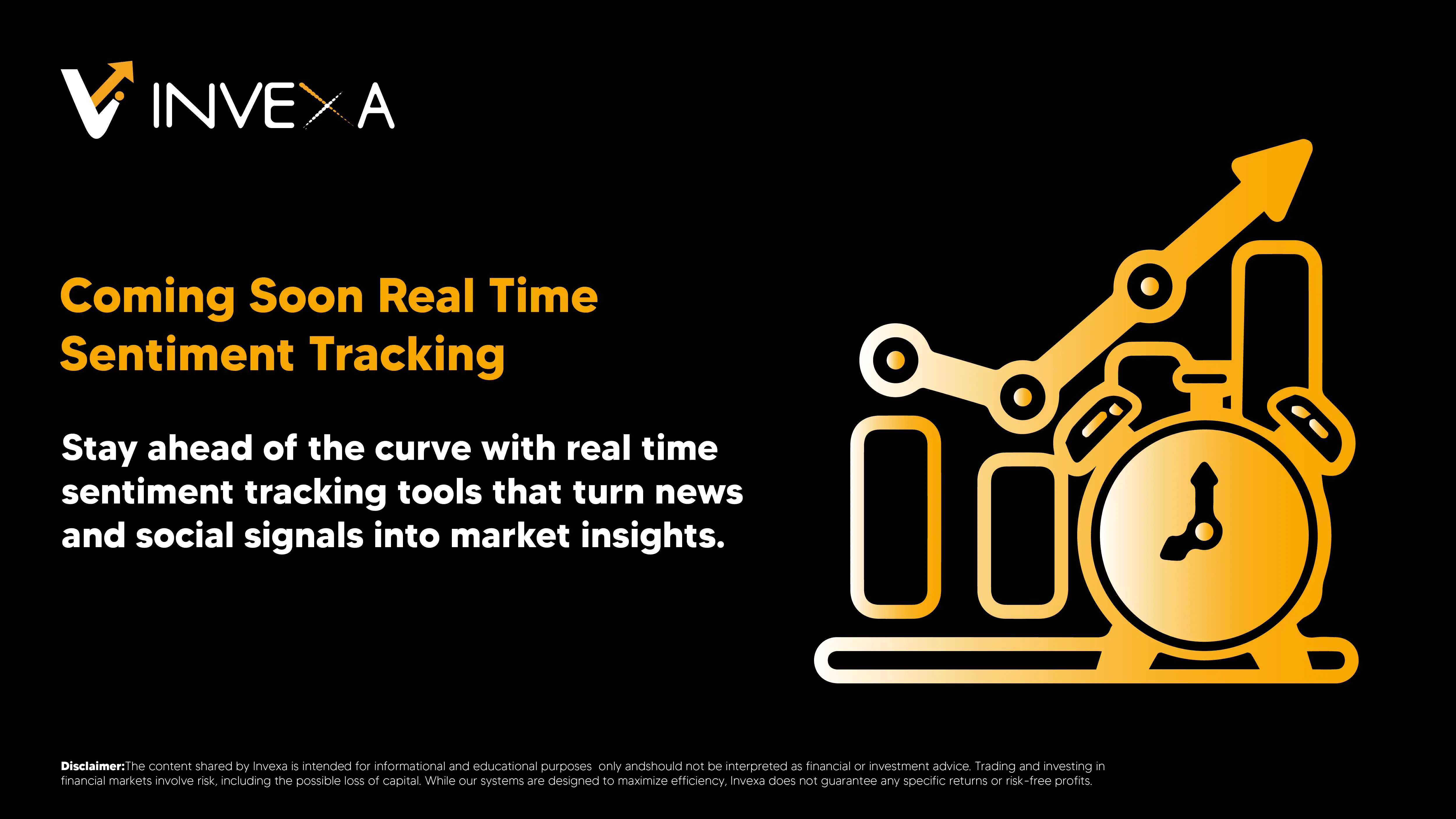
Real time sentiment tracking uses AI to scan news, social media and market data to reveal investor mood. It helps spot risks time trades and manage portfolios across crypto, stocks, forex and commodities turning market psychology into actionable insights.

Coming Soon: Real Time Sentiment Tracking for Markets
Investing is shaped as much by emotion as by fundamentals. Real time sentiment tracking uses AI machine learning and big data to read market mood across social media, news feeds, trading forums and on chain signals. That instant perspective on market sentiment helps investors spot momentum shifts anticipate crypto volatility and improve portfolio timing for stocks, ETFs, commodities, forex and tokenized assets.
Real time sentiment tracking combines sentiment analysis, NLP and alternative data to measure investor confidence, fear and attention. It produces actionable signals like bullish or bearish sentiment scores, keyword spike alerts and volume weighted social sentiment so traders and portfolio managers can react faster than with lagging indicators.
Market psychology drives price action in equities, crypto markets and FX pairs. Institutions and retail traders use sentiment dashboards to supplement technical analysis improve risk management and tune algorithmic trading signals. Sentiment data also improves quant strategies, informs ETF flows and highlights shifts in retail trader behavior.
Practical use cases include crypto sentiment analysis for Bitcoin and Ethereum flows stock sentiment to time earnings reactions forex sentiment to gauge USD strength and commodity sentiment to anticipate oil and gold moves. Portfolio managers blend sentiment indices with fundamental research and quant models to reduce drawdown and improve risk adjusted returns.
Modern stacks use real time feeds, social listening, on chain analytics and third party alternative data. Popular features include sentiment heatmaps attention spikes, whale transfer alerts and news sentiment drivers that feed trading bots, alert systems and portfolio dashboards.
Sentiment can be a leading indicator and reveal behavioral biases. But it also comes with noise from bots, false narratives and short lived viral spikes. Reliable systems use credibility scoring, cross source validation and robust back testing to avoid overfitting and false positives.
Expect sentiment analytics to merge with AI trading bots, predictive analytics and regtech tools. As DeFi, tokenized securities and alternative data expand sentiment will be embedded in robo advisors algorithmic funds and retail dashboards to provide continuous market context.
At Invexa we are building institutional grade real time sentiment feeds that combine on chain flows, social sentiment, news analytics and market microstructure. Our aim is to surface timely trading signals, provide risk alerts and integrate sentiment into portfolio allocation and automated investing workflows.
Real time sentiment tracking turns crowd behavior into usable market intelligence. When combined with price action, order book data and fundamental research bit helps investors make faster smarter decisions across crypto equities, commodities and FX. Soon, platforms like Invexa will make these institutional tools accessible to everyday investors so you can respond to market mood with confidence.